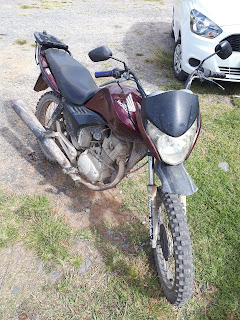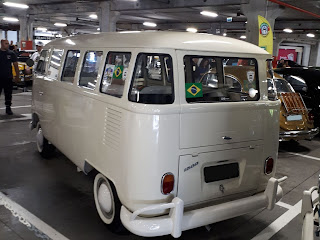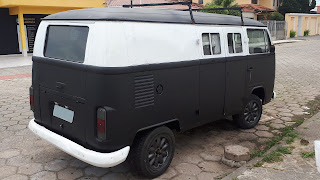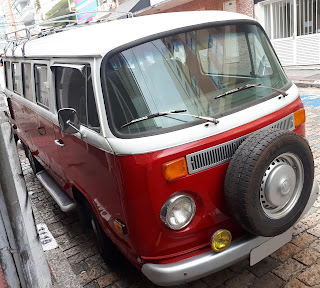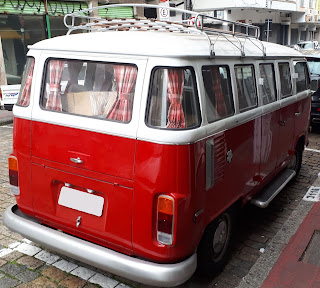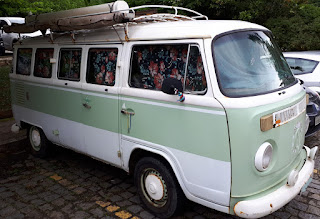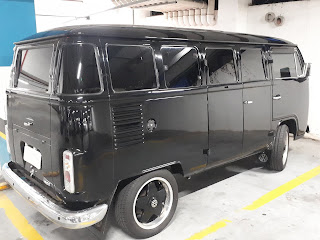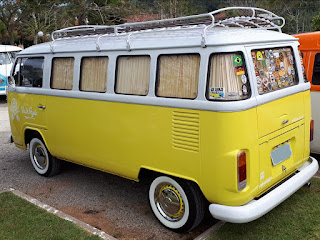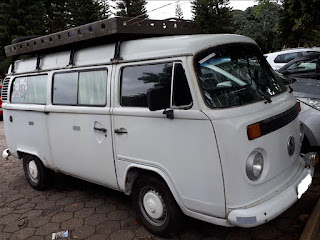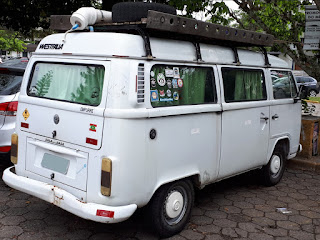Monday, April 20, 2020
2011 Honda CG 150 with a high front fender and knobby tyres
Saturday, April 04, 2020
Chevrolet Tracker: one-size-fits-all that could actually work
With the SUV craze on a worldwide level, GM phasing out the operations on RHD markets seems to be an enormous mistake, considering the new Chevrolet Tracker and its suitability to many different markets. Currently made in China and Brazil, it's available only with gasoline-powered 3-cylinder turbocharged engines ranging from 1.0L to 1.3L in China and flexfuel ones with a similar layout in 1.0L and 1.2L versions in Brazil. Even though it caters mostly to emerging markets, while in other regions left behind by GM such as Europe and Australia where fancier SUVs with a higher degree of sophistication would seem more desirable, the downsized engines which may be taken with a grain of salt by some traditional customers could benefit from lower tax brackets usually enforced in Europe.
The absence of 4-wheel drive versions could be considered a downside in markets such as Australia and South Africa, where the pereceived ruggedness and off-roading ability have been a valuable asset due to the harsh environment, despite the higher riding height being often enough to captivate a lot of former buyers of sedans and station-wagons. The strict right-hand drive requirement in those markets could seem to not justify the development of versions with such configuration due to the low sales of new Chevrolet (and Holden for Australia and New Zealand) vehicles there and in Thailand or India, but it's also worth to remind the Thai initiatives toward lower emissions favoring the downsizing and a more widespread use of ethanol. The increased demand for SUVs in India, where FCA shifted its strategy to concentrate efforts on the Jeep brand while retiring the mainstream Fiat models, would've been another good reason to consider an introduction of the Chevrolet Tracker there, also considering the still strong demand for manual transmissions in that market as a factor which could make it easier to incorporate a turbodiesel option. Even if it would've sound like a waste of time and resources to develop from scratch only for the Indian market a turbodiesel small enough to fit into an engine bay where 3-cylinder gassers are featured, outsourcing from local companies such as Greaves Cotton which currently manufactures a 1.0L 2-cylinder and a 1.5L 3-cylinder wouldn't be a bad approach.
After being the standard to be followed by non-American automakers which were still looking for a global foothold, GM has fallen due to some management errors which included an excessive focus on SUVs when they were nothing but an excuse to circumvent emission and fuel-efficiency regulations at its American domestic market. Ironically, the best way to recover would've been exploiting the way other markets also embraced the SUV bandwagon, even though body and engine size might still play a more relevant role regarding a wider acceptance among customers with a more traditional profile. So, even though it's quite underestimated and confined to LHD emerging markets, the Chevrolet Tracker still had the potential to save a global foothold for GM.
The absence of 4-wheel drive versions could be considered a downside in markets such as Australia and South Africa, where the pereceived ruggedness and off-roading ability have been a valuable asset due to the harsh environment, despite the higher riding height being often enough to captivate a lot of former buyers of sedans and station-wagons. The strict right-hand drive requirement in those markets could seem to not justify the development of versions with such configuration due to the low sales of new Chevrolet (and Holden for Australia and New Zealand) vehicles there and in Thailand or India, but it's also worth to remind the Thai initiatives toward lower emissions favoring the downsizing and a more widespread use of ethanol. The increased demand for SUVs in India, where FCA shifted its strategy to concentrate efforts on the Jeep brand while retiring the mainstream Fiat models, would've been another good reason to consider an introduction of the Chevrolet Tracker there, also considering the still strong demand for manual transmissions in that market as a factor which could make it easier to incorporate a turbodiesel option. Even if it would've sound like a waste of time and resources to develop from scratch only for the Indian market a turbodiesel small enough to fit into an engine bay where 3-cylinder gassers are featured, outsourcing from local companies such as Greaves Cotton which currently manufactures a 1.0L 2-cylinder and a 1.5L 3-cylinder wouldn't be a bad approach.
After being the standard to be followed by non-American automakers which were still looking for a global foothold, GM has fallen due to some management errors which included an excessive focus on SUVs when they were nothing but an excuse to circumvent emission and fuel-efficiency regulations at its American domestic market. Ironically, the best way to recover would've been exploiting the way other markets also embraced the SUV bandwagon, even though body and engine size might still play a more relevant role regarding a wider acceptance among customers with a more traditional profile. So, even though it's quite underestimated and confined to LHD emerging markets, the Chevrolet Tracker still had the potential to save a global foothold for GM.
Thursday, April 02, 2020
3 reasons to still like the VW Kombi
Hate it or love it, the Kombi has set its footprint on the roads of history. From simple utilitarian roots which evolved to a cult-following associated with other rear-engined Volkswagens, there is no way to deny its significance and how it influenced other vehicles with a similar bodystyle despite they often featuring a different engine position and driveline layout. Among so many reasons why it's still one of the nicest vehicles ever, at least 3 can be easily highlighted.
1 - one size fits all: with a relatively small footprint, the Kombi provides enough space for many commercial duties while also being suitable to serve as a family hauler or to provide better accomodation than a camping tent;
2 - good traction on harsh terrain despite being 2WD only: the engine compartment may become a clearance issue while attemptint to load a Kombi from behind, but the rear-engine and rear-wheel drive layout keeps the weight bias more concentrated around the drive axle under most of the load conditions, enhancing its grip on some challenging routes;
3 - simple mechanics: its air-cooled engine with a gear-driven valvetrain has few parts which can get worn out and need a replacement along the extended useful life, and the absence of a liquid cooling system leads to fewer concerns regarding suitability to go through different weather conditions;
1 - one size fits all: with a relatively small footprint, the Kombi provides enough space for many commercial duties while also being suitable to serve as a family hauler or to provide better accomodation than a camping tent;
2 - good traction on harsh terrain despite being 2WD only: the engine compartment may become a clearance issue while attemptint to load a Kombi from behind, but the rear-engine and rear-wheel drive layout keeps the weight bias more concentrated around the drive axle under most of the load conditions, enhancing its grip on some challenging routes;
3 - simple mechanics: its air-cooled engine with a gear-driven valvetrain has few parts which can get worn out and need a replacement along the extended useful life, and the absence of a liquid cooling system leads to fewer concerns regarding suitability to go through different weather conditions;
Subscribe to:
Posts (Atom)
